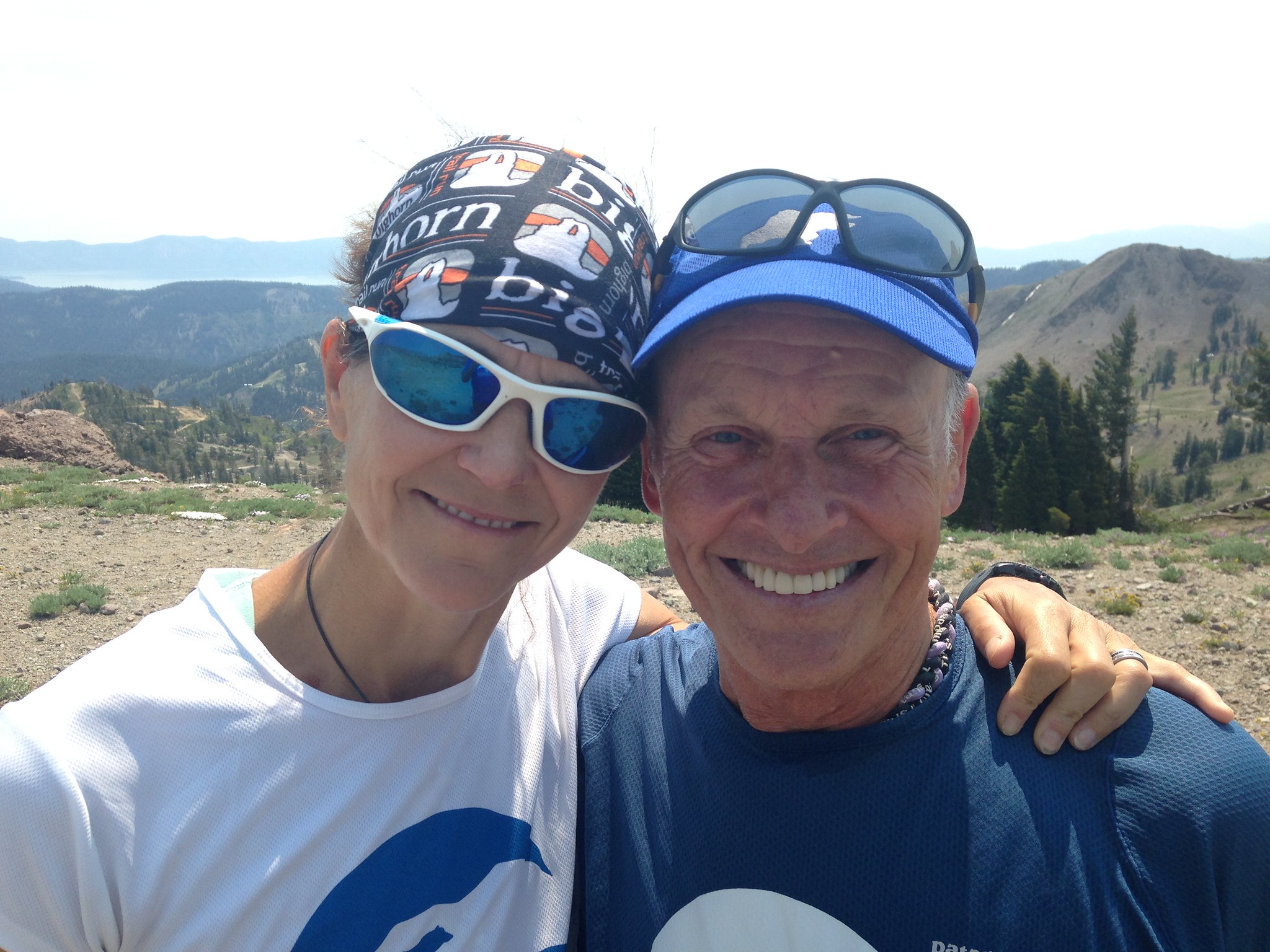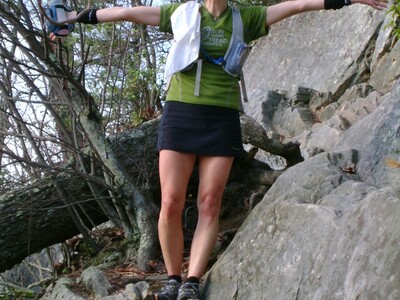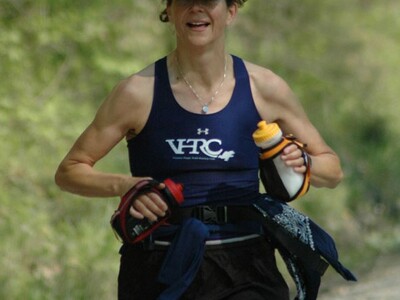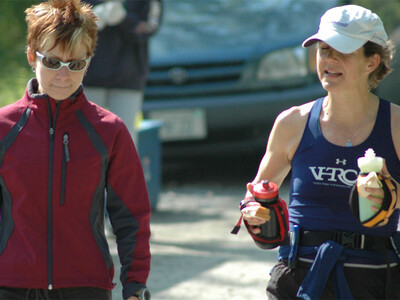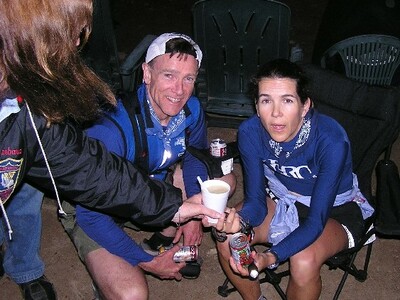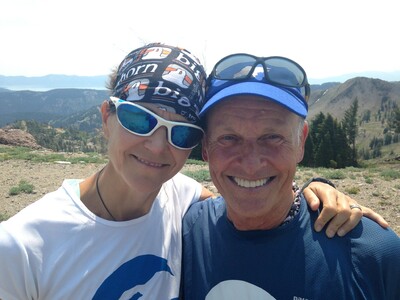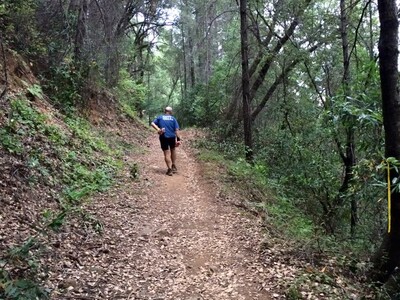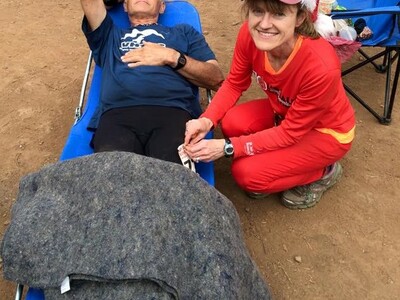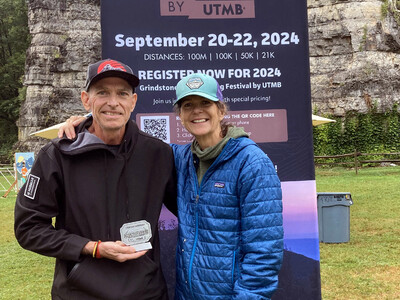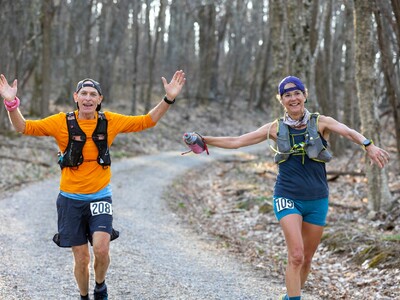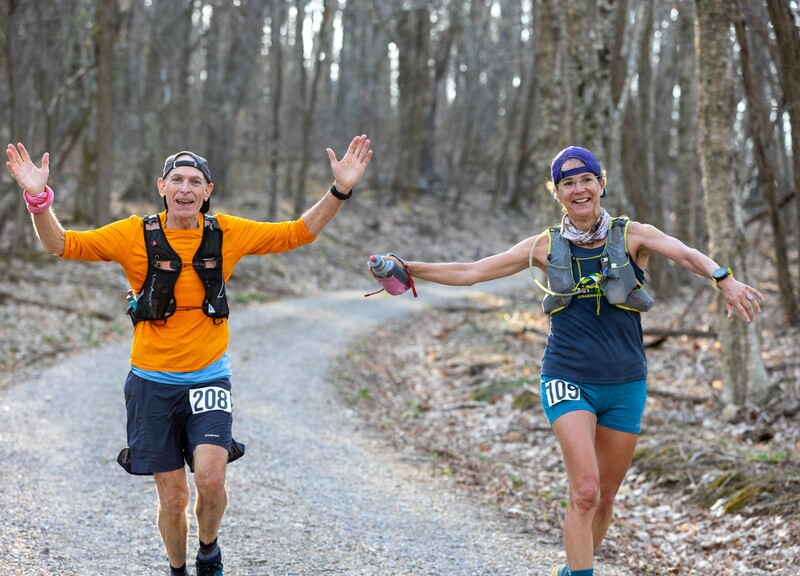
Find Your Pacer: In a 100 Mile Race and in Life
This is adapted from my Instagram post from September 25, 2023
“It’s about the mountains. It’s the power and the peace of those old mountains. It is air and sunshine and weather and nature. Daylight and darkness. Wind and water. It’s about being part of it rather than just passing through. It’s getting closer to where I came from, all the while moving and getting closer to where I want to be.”
~ Alan Gowen

At St. Anne’s-Belfield School, where I have served as school counselor for the past 29 years, faculty and students are invited to speak at the weekly Chapel service to share a meaningful experience that might resonate with our community. Two weeks ago at Chapel, I talked about what it means to be a “Pacer” — in a 100 mile race, and in life. I opened my talk with this beautiful quote from our friend Alan Gowen, which I believe captures the feeling of mountain ultrarunning so perfectly.
In my talk, I shared with my students that being asked to serve as a Pacer for a fellow trail runner at an ultra is an honor and a privilege. A Pacer’s job is to help navigate the myriad of things that can go wrong with calm and confidence. The Pacer serves as a coach, friend, counselor, and tough love giver. Over the years, I have served as a Pacer for a number of friends: the youngest, a 28-year-old graduate student at UVA, and the oldest, a 71-year-old grandfather named Gary Knipling. The stories of their runs are as different as the runners themselves, and each has taught me something new about the powers of resilience, problem-solving, patience, positive self-talk, and vulnerability. One year at the Grindstone 100, I paced a runner who moved into first place at mile 81, not long after I joined her. At mile 99 she tripped and fell, and exhausted and anxious that the second-place woman was getting close, she began to cry, “I can’t lose this race!” as she sobbed into the darkness. She was right on the verge of losing all her composure, so I told her, “OK, you can cry for one minute while we hike, and then we are going to run to the finish so you can win this thing.” And she did.
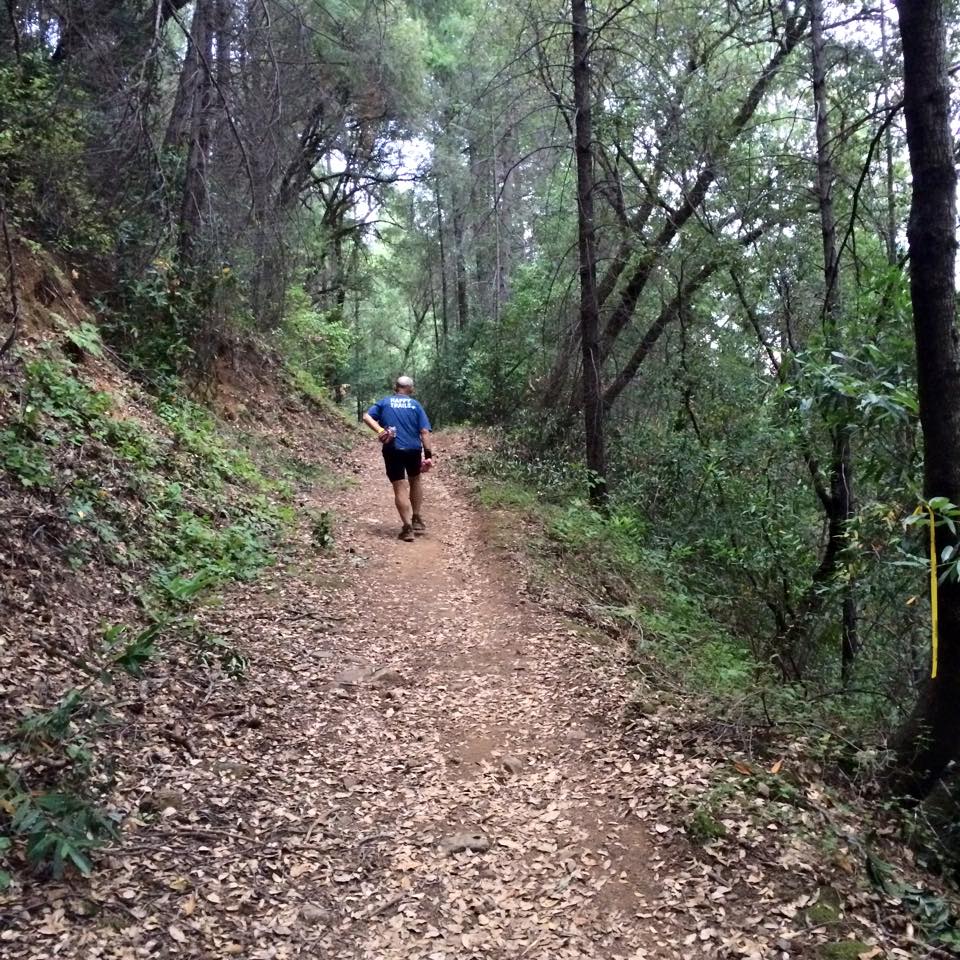
Most of my pacing “gigs” (as I like to call them, since my husband is a musician) turn out well, like this one: the runner runs a solid race, their body more or less cooperates, and they finish at or under their goal time. But sometimes that isn’t always the case, and there is nothing to do but keep the runner safe and moving. This happened in 2015, when I paced Gary when he was attempting to become the oldest finisher at that year’s Western States 100 (this was the same year that Gunhild Swanson finished with four seconds to spare to claim that title in an epic finish).
Due to the remote location of the WS trail, two riders on horseback follow the last runners throughout the race for safety reasons. When Tom Corris, Quatro Hubbard and I met Gary at the Foresthill aid station at mile 68, we could hear the ominous sound of hoofbeats coming up the pavement. Gary had been running very close to the cut-off times all day long, and the sound of the hooves was our signal time was running out.
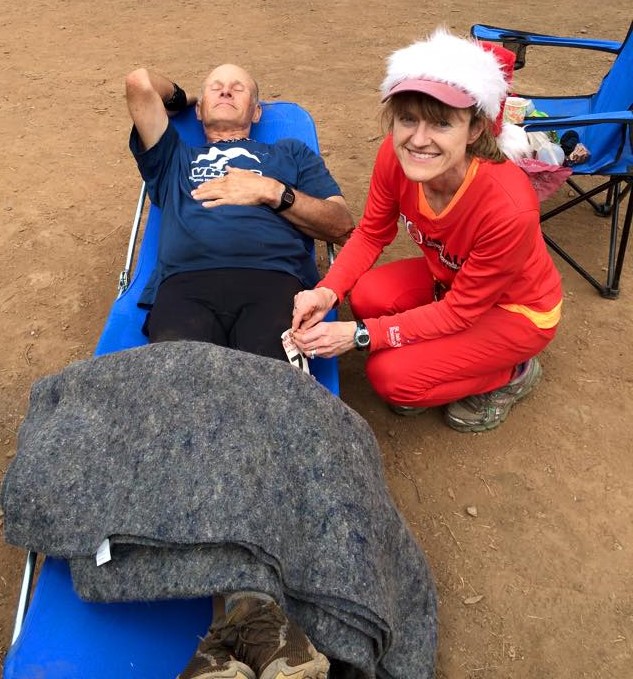
Quatro paced Gary to the Rucky Chucky AS, and I took over as we crossed the American River. At this point, Gary was the last runner on the course, and the horses were closing in. I tried all my pacing tricks to encourage him to keep eating, drinking, and moving, but despite Gary’s best efforts, the horses caught us and he was timed out at the mile 80 Auburn Lakes Trail aid station (and in classic Gary fashion, he took the news in good spirits, of course). Even so, I felt like I had let him down.
Years before, I had learned about what it takes to be an effective Pacer from one of the best: our friend, the late, great Mike Broderick. I was running my first 100 at our beloved MMT 100 in 2005. Two days before the race, a few of my students decorated my car with good luck wishes and inspirational music lyrics, and my heart was full as I drove to Front Royal, where the race was staged. My plan for MMT was basic: power-hike the many uphills, run the flat sections and downhills, and navigate the Massanutten rocks without incident.

Every eight miles or so my crew, including Dave and Jill Quivey, my husband Rusty, and our son Chapin, would bring special things for me like Starbucks double shots, V-8s, and a McDonalds cheeseburger (clearly I knew nothing about proper nutrition for 100s back then). At around mile 75, after leaving Edinburgh Gap (this was on the old, pre-2010 MMT course) I started to hit the dreaded “bad patch” in the race. Eating all that solid food made my stomach retaliate, so I threw up and lost all the nutrients I needed. The doubting voices began creeping into my head, and in classic newbie fashion, I decided that the 83 mile Woodstock Tower Road aid station was a good enough place to stop.
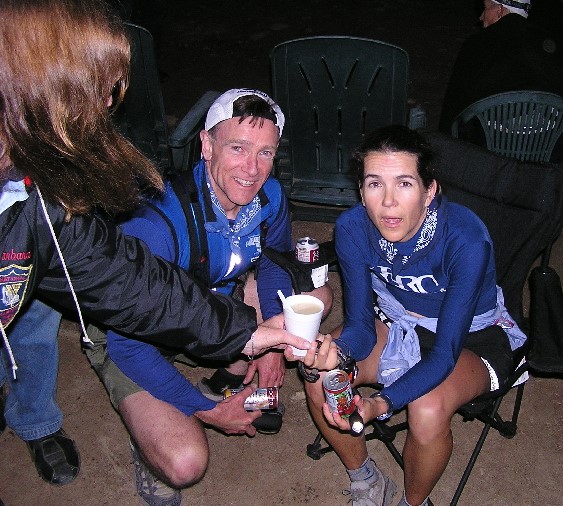
I shared the decision that I was going to drop at the next aid station with Mike, who had joined me as a Pacer back at Edinburgh Gap. And being the good Pacer that he was, Mike wouldn’t let me entertain the idea. Instead, he gave me space and time to get back into the game. He joined Dave, Jill, Rusty, and Chapin as they fed me, wrapped me up in blankets and let me sleep…and then, as the sun rose over Fort Valley, he asked me the question that changed everything: “How can you tell your students that you quit just because it got hard?”
Of course, that got my attention. How could I tell my students and athletes to “dig deep” when they are tired from running up and down the field, and then turn around and quit because it got hard and uncomfortable for me? I reluctantly agreed to get back on the trail, and together Mike and I hiked and jogged the last 15 miles to finish that first 100 in 31 hours and 47 minutes.
Since then, I’ve finished a few more 100s and paced many friends to ultra finishes, including ten different runners at the Grindstone 100. Grindstone is my favorite pacing gig because it utilizes the classic and tough Wild Oak Trail. This past weekend, I paced Steve Combs to his second Grindstone 105+ mile finish, and it was epic. Landing late Friday night, Tropical Storm Ophelia created epic weather of cold rain and high winds for over 24 hours for the runners.
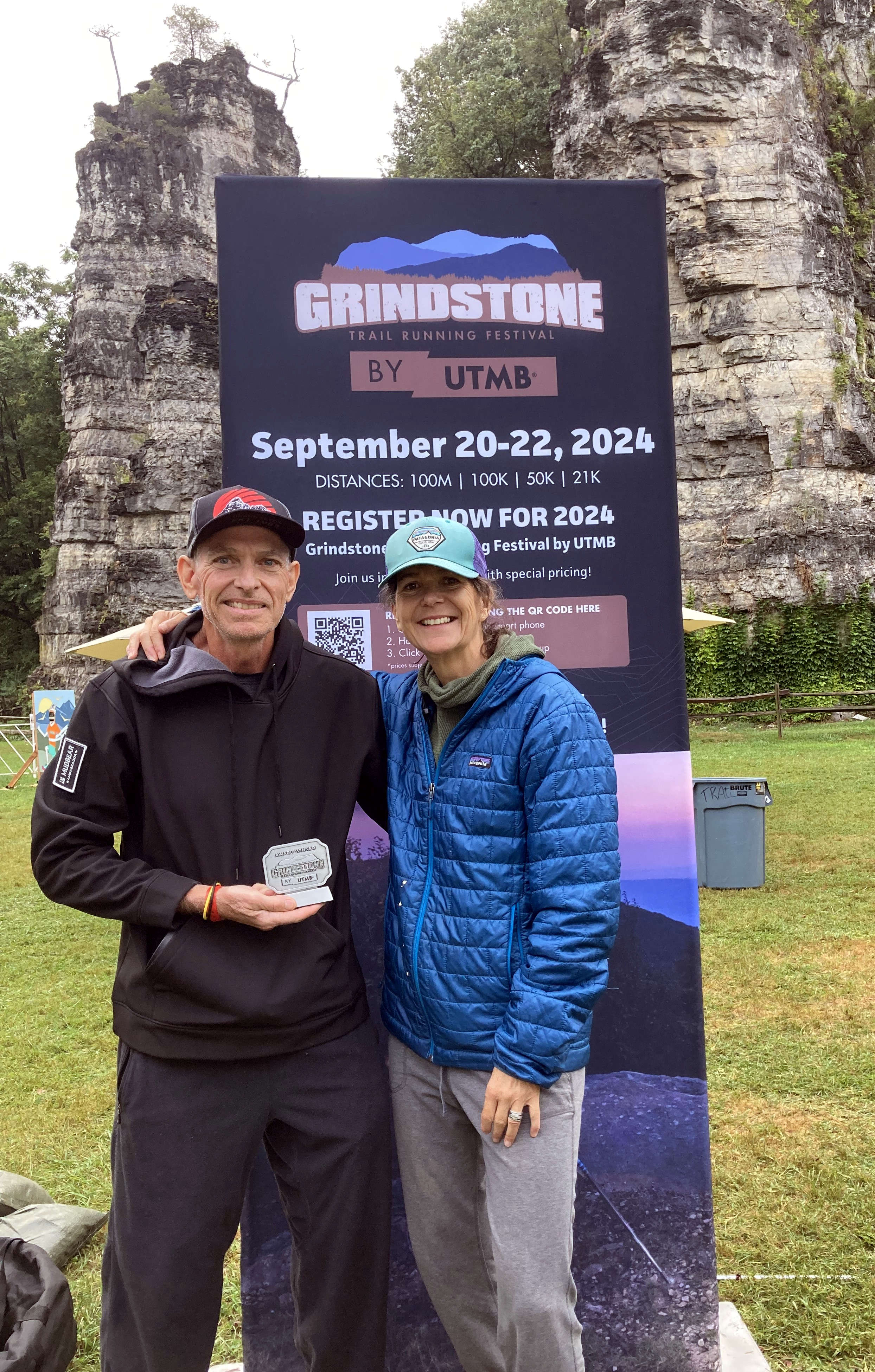
I joined Steve for the final 50k, which on the new Grindstone course traverses the Magic Moss section of Hankey Mountain, five miles of gravel road to Camp Todd, the long climb up to Little Bald before dropping into the North River parking lot, and a final 12-mile push on sweet mountain biking trails and road. Steve was struggling with sleepiness at mile 83, so he agreed to a 5-minute nap under the aid station tent at Camp Todd. Ascending the intense grind up Little Bald in the dark, in pouring rain, and with whipping winds, he focused on steady movement and careful descending on the slick rocks. When running became painful due to sore feet, he leaned into our run/walk strategy. His courage to listen, be vulnerable, and trust the process enabled Steve to pass 15 people — including a guy in his 60-64 age group to snag the age group win by 2 minutes. He crossed the finish in 33:44.
In my Chapel talk, I encouraged my students to recognize the Pacers that exist among them every day: the sibling or family member who has their back, even when they are hard to love; the friend who listens deeply and asks the hard questions, the coach who sets the bar high. Someone who knows what they are feeling in that hard moment, to tell them something they don’t want to hear, to light their path when it gets dark. To celebrate their victories, and comfort them in disappointment. To help get them to the finish line.
My pacing gig last weekend with Steve only confirmed that I learn as much about resilience, courage, and generosity as a Pacer as when I pin on a bib as a runner. To the runners who have invited me to join them on their journeys over the years: Steve, Gary, Keith, Chrystal, Martha, Rob, Jason, Becca, Annie, Jenny, Marlin, Tim, Bob, Jeff, Stephanie, Quatro, and Alissa: Thank you. It was an honor to accompany you in the mountains, to bear witness to your strength and determination, through daylight and darkness, wind and water. I hope you got closer to where you wanted to be. I know I did.
